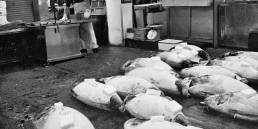
BIO: Tom started shooting still images in the late 1960s. For the next 50 years he worked in film and video production, equipment sales, advertising, industrial training, public relations, and higher education management; always utilizing audiovisual technology in some form. He worked at the University of Tennessee for 32 years; eighteen of those as Director of the Video & Photography Center.
While at UT, Tom worked with actor James Earl Jones, author Alex Haley, Peyton Manning, Pat Summitt, and the FBI profilers featured in the film Silence of the Lambs. He traveled to Ireland, London, Costa Rica, many major US cities and every county in Tennessee. He filmed the Lady Vols at the White House Rose Garden after they won a national championship. While at UT his work was recognized by The New York Festivals, Council for the Advancement and Support of Education, and the International Television Association
Artist Statement
Thoughts On Photography
A still photograph puts a frame around a moment frozen in time. It sits still and allows and perhaps commands the viewer to look at something real. One definition of realism is a “rejection of visionary.” Yet photography done well is transcendent, “extending the limits of ordinary experience.” So, when done well it can become realism transcendent.
Seeing is the essence of photography. Seeing the situation best may be when all the visual elements coalesce to produce something that engages the viewer.
Henri Cartier-Bresson, the French humanist photographer coined the term “the decisive moment.” In many of my photographs I’m looking for that moment. In others it’s a static situation, e.g., architecture and landscapes. In those instances, I look for strong visual elements, contrast, color, texture, reflections, and shape.
My still photography is influenced by a diversity of photographers, including Cartier-Bresson, Ansel Adams, Minor White, and Diane Arbus.




